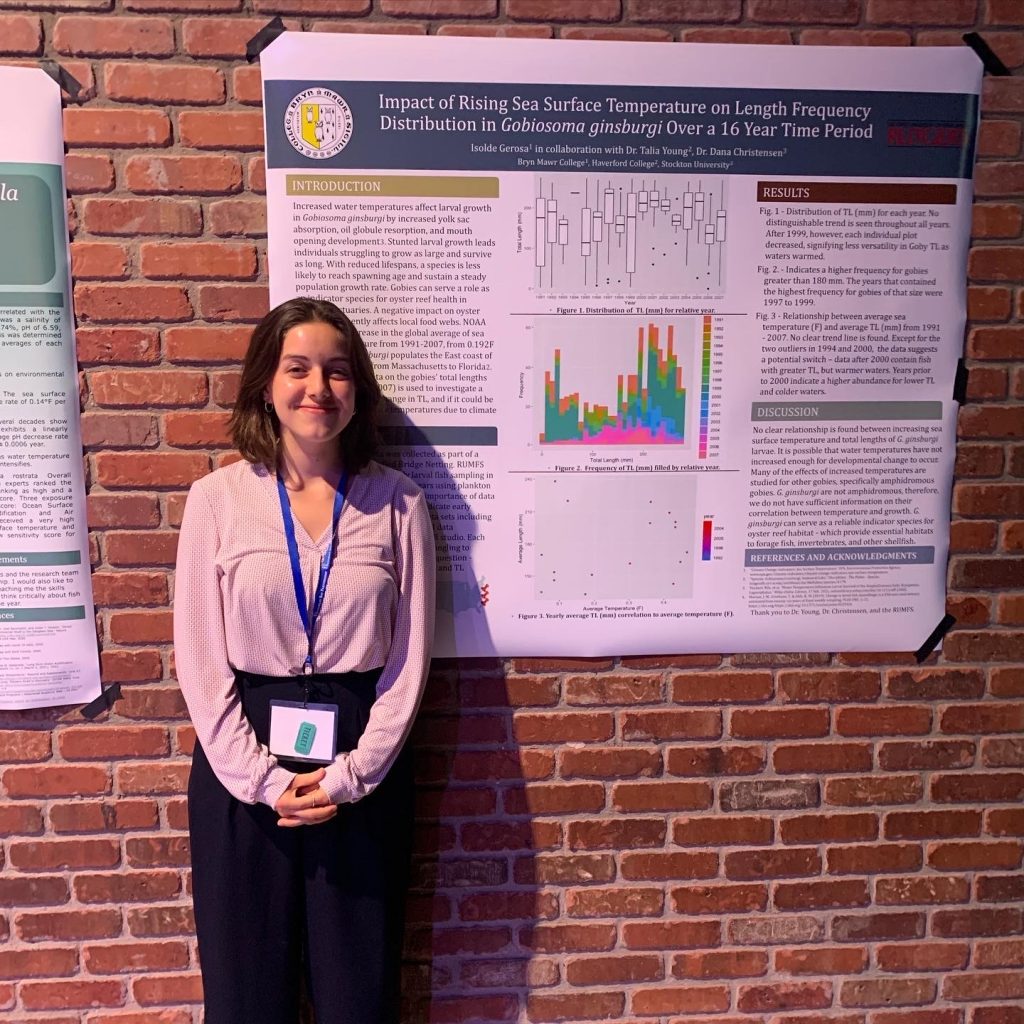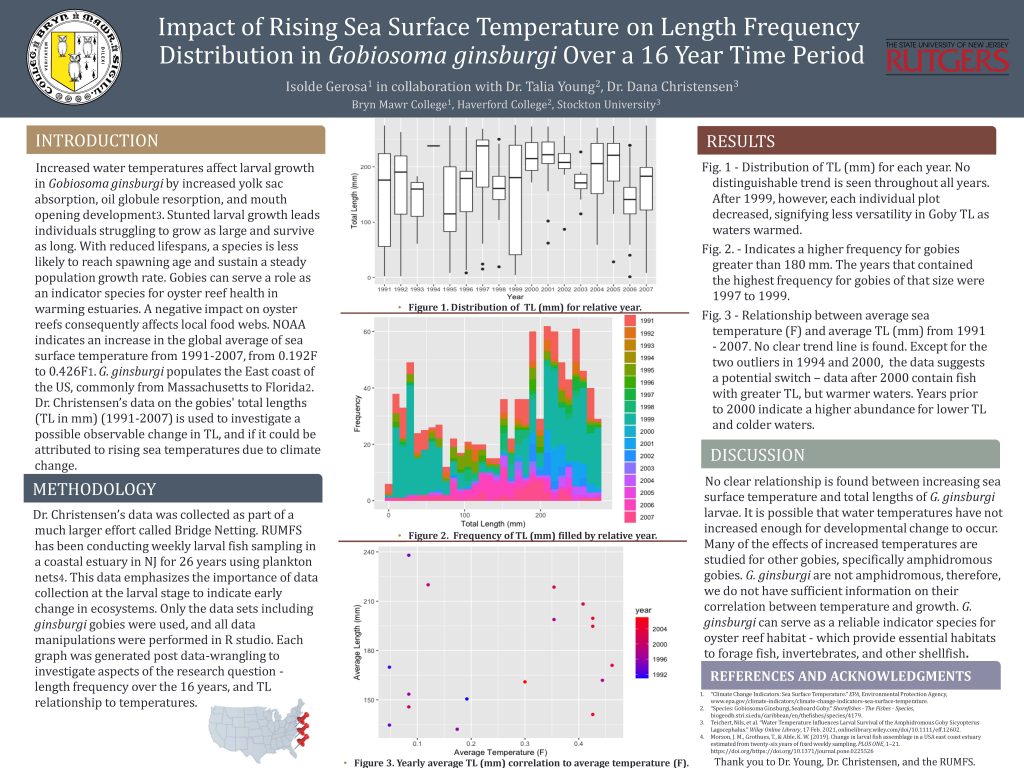Student Awards
MAC Student Presentation Awards 2022
The MAC AFS Chapter always encourages students to present their research at meetings and we had a number of students present oral presentations and posters at our meeting. Our MAC judges have evaluated the scores and we are happy to announce our student presentation winners.
Lauren Cook won best student oral presentation for:
Is fish “blue” carbon actually “brown”? Initial laboratory-based approaches in quantifying fish metabolic waste products for a highly abundant, commercially harvested North Atlantic forage fish, Atlantic menhaden (Brevoortia tyrannus).
Small pelagic fish (“forage fish”) are potentially significant contributors to coastal carbon flux given their abundance and seasonal cross-shelf migratory behavior. Understanding their biogeochemical role in coastal regions is a growing informational need for ecosystem-based fisheries management, especially as fishing companies prepare to meet net-zero carbon emissions goals. Even though marine fish are thought to contribute to approx. 16% of carbon flux out of the euphotic zone, the uncertainty on this estimate is large, and carbon release data for forage fish are practically nonexistent. In order to constrain this estimate and better understand relative contributions of fish metabolic byproducts to carbon cycling and flux, regional estimates are required, but no full carbon production suite (fecal pellet, calcium carbonate, excretion, and respiratory CO2 release) exists for any fish species. I conducted preliminary laboratory trials with a highly abundant and commercially harvested forage fish on the US Northeast Shelf, Atlantic menhaden (Brevoortia tyrannus). Results suggest Atlantic menhaden fecal material sinks rapidly (>3000 m d-1) and could reach coastal benthos in less
than a day. I discuss achievements and limitations to this approach, and future plans to better constrain these estimates.
Isolde Gerosa won best student poster presentation for:
Impact of Rising Sea Surface Temperature on Length Frequency Distribution in Gobiosoma ginsburgi Over a 16 Year Time Period.
Seaboard gobies (Gobiosoma ginsburgi) populate coastal waters from Massachusetts to Florida. Increased water temperatures affect larval growth in gobies by increased yolk sac absorption, oil globule resorption, and mouth opening development. Stunted larval growth leads individuals struggling to grow as large and survive as long. With reduced lifespans, a species is less likely to reach spawning age and sustain a steady population growth rate. Seaboard gobies are found in association with oyster shells, meaning they have the potential to serve as an important indicator species for oyster reef health – a habitat threatened by warming waters. A negative impact on oyster reefs consequently affects local food webs. The RUMFS has been bridge netting in a coastal estuary in Little Egg Inlet, NJ for 26 years, collecting weekly data on larval fish in order to measure the effect of warming waters due to climate change on certain species. Larval fish are ideal for detecting early ecosystem changes because they occur at low trophic levels. The data analysed ranges from 1991-2007. Within this same time frame, NOAA indicated an increase in global average sea surface temperatures from 0.192F to 0.426F. The RUMFS data, which includes the total lengths of the gobies as well as sea surface temperature collected at each tow date, were used to find a potential correlation between increasing water temperatures and decreasing total lengths. Results from this timeline and data set indicate that there is no correlation, or at least not at this stage in the seaboard gobies’ development. A number of factors have yet to be analysed that could impact the G. ginsburgi’s lengths indirectly, such as their food source, interaction with other species, and environmental change in the oyster reefs. There is published literature on amphidromous gobies – which G. ginsburgi are not – and how increased water temperatures impact their development. Along with the other indirect factors that must be investigated, there must also be more research done on seaboard gobies themselves, and how they will be impacted by warming waters.


